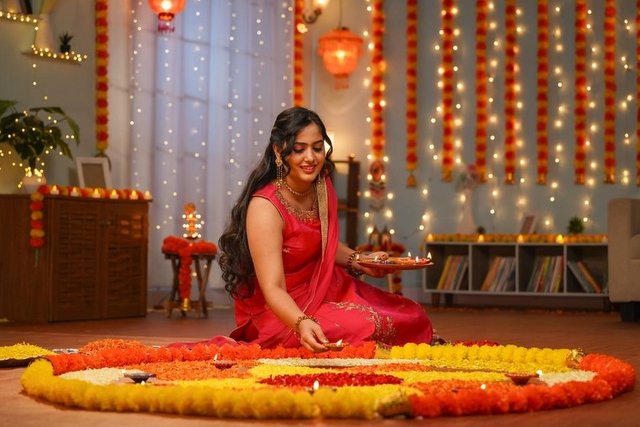Diwali, also known as the Festival of Lights, is one of the most widely celebrated festivals in India. However, as we know, India is a land of many (1.4 billion to be exact). Within this vast expanse, Diwali takes on a myriad of colours, customs, and traditions.

So, if you’re as curious as we are to find out how this glorious festival is celebrated around the country, design some breathtaking Diwali cards and join us as we embark on a journey to explore the kaleidoscopic beauty of Diwali across the diverse landscapes of India.
Diwali Celebrations In Northern India
In Northern India, Diwali is celebrated with some seriously unparalleled enthusiasm and grandeur. It celebrates the return of Lord Rama after defeating Ravana, the asura king. It symbolises the victory of light over darkness. Homes are elaborately adorned with rangoli designs, and clay lamps (diyas) light up every nook and corner. It’s a time for families to come together and perform the Lakshmi Puja — seeking the blessings of the goddess of wealth and prosperity. This is also a time for the unceasing use of firecrackers, believed to be used to drive away evil spirits and a particular favourite of children.
But it doesn’t just end at home — many of the shops are kept open until the afternoon, believing that a successful sale on Diwali day will ensure a prosperous year ahead. Public streets are lit up and decked in the day’s colours, creating a magical atmosphere. The vibrant bazaars are a hive of activity as people shop for new clothes, the day’s traditional sweets and ornate decorations.
Sikhism
Diwali is celebrated in Sikhism as well. Apart from Diwali, they also celebrate it as Bandi Chhor Divas. This translates to ‘Prisoner Release Day’, and it’s marked by Sikhas as a commemoration of the release of Guru Hargobind Ji along with 52 other prisoners from Gwalior Fort in the early 17th century. This story stands as an important lesson in the teachings of righteousness over tyranny.
There is a huge focus on light in the Sikh communities of Punjab, especially in the focal points of gurudwaras. Sikhs congregate to worship in buildings that are spectacularly illuminated. There, communal feasts will be prepared, and the Akhand Path will take place. This is a continuous reading of the teachings of Guru Granth Sahib, which tends to start a few days before the festival and concludes on the day. Processions called…
Click Here to Read the Full Original Article at Inditales…